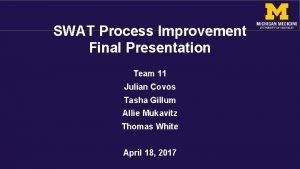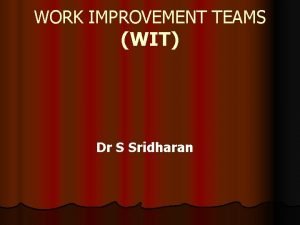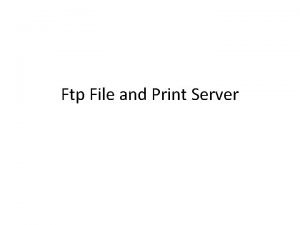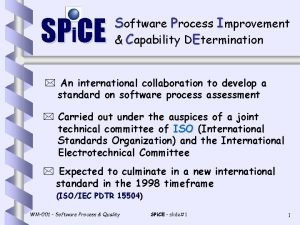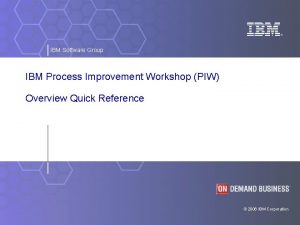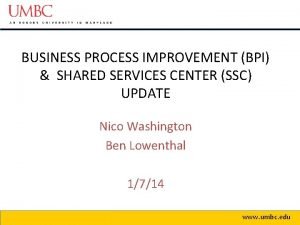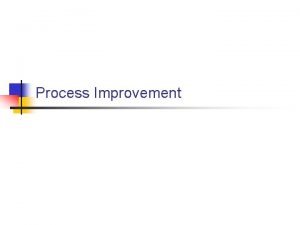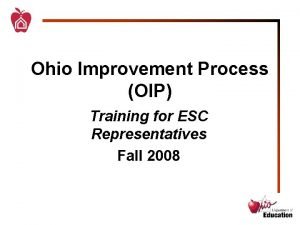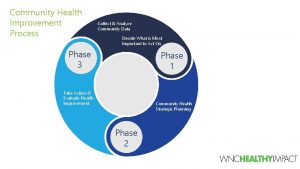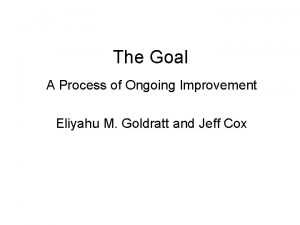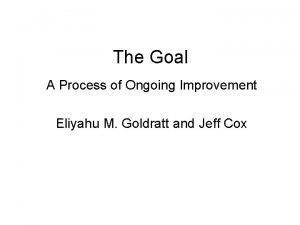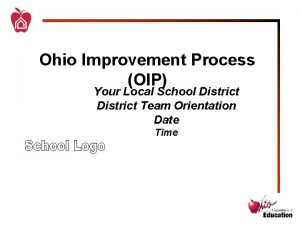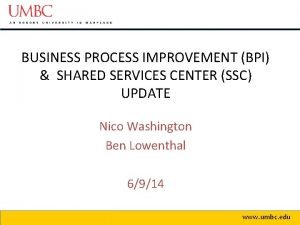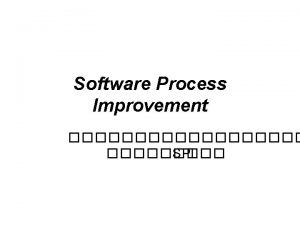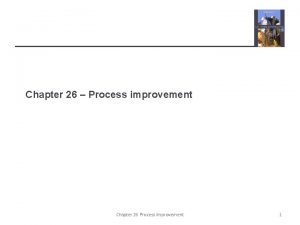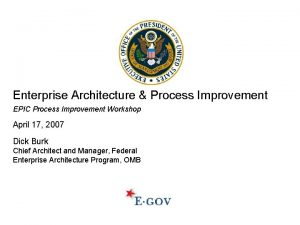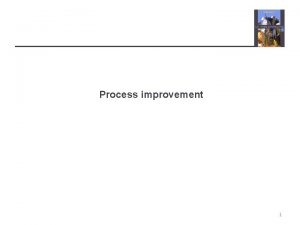SWAT Process Improvement Final Presentation Team 11 Julian







































- Slides: 39

SWAT Process Improvement Final Presentation Team 11 Julian Covos Tasha Gillum Allie Mukavitz Thomas White April 18, 2017

Introduction • SWAT - Specialized Workforce for Acute Transport • June 2016 policy change doubled the number of transport requests • SWAT desires improved coordination between SWAT team, bedside nurses, and procedural units 2

Goals & Objectives Goal: Analyze the current process flow of transporting patients and identify key areas for improvement concerning awareness, communication, readiness, and efficiency Objectives: • Identify coordination issues in the current patient transport process • Formulate solutions to improve patient handoffs • Make recommendations on how these solutions should be implemented 3

Engineering Methodologies

Methods for Collected Data Task Sample Size On-site Observations 8 weeks Shadowing Transport Runs 25 runs SWAT Team Interviews 16 nurses Team 11 Time Studies 23 runs Previous IOE 481 Team Time Studies 180 runs SWAT Database 6683 entries SWAT Clipboard Data 910 entries Bedside Nurse Interviews 12 nurses 5

Lean Methods of Analysis • Went to the Gemba to observe operations first hand • Developed a process map • Searched for 8 wastes in SWAT transport 6

Statistical Methods of Analysis • Performed a paired t-tests to validate observations • Studied time distributions to understand tendency and spread • Stratified data to compare performance metrics 7

Findings & Conclusions

Transport Process Has High Variation 9

15 Minute Policy Involves Built-In Waste 10

SWAT Database Highlights 7 Frequented Units 11

Patient Readiness in 7 Frequented Units 12

Bedside Nurse Interview Matrix Source: Nurse Interviews Sample Size: 12 Nurses Interview Period: March 2017 13

Nurses Desire Reliability and Communication • SWAT does not inform nurses of late arrivals, procedure delays, or return times • Bedside nurses can confidently predict SWAT arrivals and returns unless SWAT or the procedure is delayed • 5/12 nurses interviewed nurses were interested in notifications when SWAT encounters a delay 14

Recommendations

Weekly Huddles with Bedside Nurses

Meet with Bedside Nurses Regularly At meetings (aka "huddles") SWAT and bedside nurses would: • Track metrics and assess overall impressions • Communicate issues • Identify problem solvers • Brainstorm solutions • Ensure follow ups and create accountability • Reduce inconsistency 17

Proposed Huddle Template 18

Proposed Huddle Template 19

Huddles Will Foster Communication Improved communication Improved trust and relations between Bedside Nurses and SWAT Opportunity for feedback on piloted changes and problem solving 20

Page Bedside Nurses

Recall Relevant Findings • Procedural delays of 10+ min occur in 9% of runs • Interviewed bedside nurses desired more communication with SWAT Shares SWAT definition of Patient 12/12 Readiness Expects SWAT 15 min before 7/12 procedure Before SWAT arrival transfers 3/12 patient to transport monitors Would like pager warning before 5/12 SWAT returns 22

Page Bedside Nurses to Improve Coordination Team 11 recommends three additional points of contact to improve coordination: 1. When SWAT is running late 2. When procedure is delayed 3. Before returning to inpatient units 23

Late SWAT Arrival On the rare occasion when SWAT is late for a transport, Team 11 recommends they send a page to inform the nurse Expected Impact: • Prevent patients for waiting unnecessarily on stretchers • Save bedside nurses time spend monitoring patients • Improve trust in SWAT team 24

Procedural Delay Team 11 recommends SWAT send out a page notifying nurses of any procedural delay Expected Impact: • Pages will reduce waste X-Ray is delayed 15 mins • Nurses could be more productive and better prepared for patient hand-offs • Improving coordination on the 9% of transports that experience >10 min delays 25

SWAT's Return Team 11 recommends SWAT send pages to notify nurses when they are returning from the procedure with the patient Expected Impact: • Will serve as an early "call light" so nurses can prepare for patient hand-off • Will improve coordination between SWAT and the nurses • Without burdening nurses – according to nurse interviews 26

Pages Will Improve Hand-Off Coordination Improved communication Improved coordination for efficient patient hand-offs Reduced waiting time 27

Flexible Bedside Preparation Times

Change 15 Minute Policy to Plan for Variation 29

When the Bedside Nurse Prepares Patient 30

When SWAT and Bedside Nurse Prep Patient 31

Flexible Bedside Prep Will Add Value Plan for variation in patient mobility Reduced risk of waiting waste and lost table time Increased nurse utilization (Save 11 hours each week) 32

Steps Toward Process Improvement 33

Thank You!

SWAT Clipboard Sheet 35

Accountability and Performance IOE professor's dissertation discussed an experiment that studied accountability and its positive influence on performance Improved performance can be incentivized by increasing the accountability of the individuals involved in handoffs 36

Process Map (90 th percentile observations) 37

Discrepancy in Collected Data • Research suggests that default in data entry may explain discrepancy • If SWAT fails to provide an assessment of readiness, the field remains unchecked • The database may grossly underestimate patient readiness Johnson and Goldstein 38

Observation Data Validation Paired t-test suggests average times in January 2017 tend to be 45 sec shorter than November 2016 data 39
 Swat presentation
Swat presentation Ibm swat team
Ibm swat team Ibm swat team
Ibm swat team Work improvement teams
Work improvement teams Activity 1 know thyself better let's get swot-ing
Activity 1 know thyself better let's get swot-ing Maciej swat
Maciej swat Codes and conventions
Codes and conventions Critical missions swat
Critical missions swat Swat education
Swat education Hbrowse
Hbrowse Samba swat
Samba swat Samba swat
Samba swat Rootvpn
Rootvpn Using a tennis racket to swat flies is an example of
Using a tennis racket to swat flies is an example of Samba swat
Samba swat Ibm checkpoint goals examples
Ibm checkpoint goals examples Altran nord
Altran nord Spi in software engineering
Spi in software engineering 8 step improvement
8 step improvement Ibm process improvement
Ibm process improvement Shared services process improvement
Shared services process improvement Test process improvement
Test process improvement Community health improvement process
Community health improvement process Rpiw process
Rpiw process Ohio improvement process
Ohio improvement process Data wise action plan template
Data wise action plan template Wnchi
Wnchi The goal: a process of ongoing improvement
The goal: a process of ongoing improvement The goal: a process of ongoing improvement
The goal: a process of ongoing improvement Rapid process improvement
Rapid process improvement Ohio improvement process
Ohio improvement process Step 1 in 7 step improvement process
Step 1 in 7 step improvement process Shared services process improvement
Shared services process improvement Rapid process improvement workshop
Rapid process improvement workshop Going native project management
Going native project management Team spirit becomes team infatuation
Team spirit becomes team infatuation The white team cheers for the blue team, just like
The white team cheers for the blue team, just like Markstrat final presentation
Markstrat final presentation Final year project presentation
Final year project presentation Fyp progress report
Fyp progress report
